
Navigating wine bottle labels can be as confusing as navigating the wine aisle. Some terms are regulated, and some aren’t. Knowing what different wine label terms mean can help you choose a wine that you’ll enjoy.
Check out this quick and easy wine label terminology glossary of 16 common wine label terms that you’ll run into while shopping for wine.
- 1. Alc. by Vol. – Alcohol by Volume (ABV)
- 2. AOC (Appellation d’Origine Contrôlée)
- 3. Wine Label Term: Blend
- 4. Wine Label Term: Body
- 5. Bouquet
- 6. DOC (Denominazione di Origine Controllata)
- 7. Estate Bottled
- 8. Old Vine
- 9. Reserve
- 10. Single Vineyard
- 11. Sulfites
- 12. Tannins
- 13. Terroir
- 14. Unoaked
- 15. Varietal
- 16. Vintage
- Final Thoughts – Read those Wine Labels!
- Thirsty for More?
1. Alc. by Vol. – Alcohol by Volume (ABV)

This is the percentage of alcohol in the wine. The number you see on the bottle, like 13% abv, means that 13% of the liquid inside the wine bottle is alcohol – more specifically ethanol. Wine label regulations mandate that the ABV number be listed and in a font that’s a least 1 millimeter in size (here’s a list of all regulated wine label guidelines in the US – external link to the TTB).
Alcohol comes from fermented grape juice. The riper the grapes, the more sugar they have that can be fermented into alcohol, meaning higher alcohol wine.
Helpful Tip: Here’s a geeky post on how wine fermentation works. It’s not for everyone, but maybe it’s for you!
2. AOC (Appellation d’Origine Contrôlée)
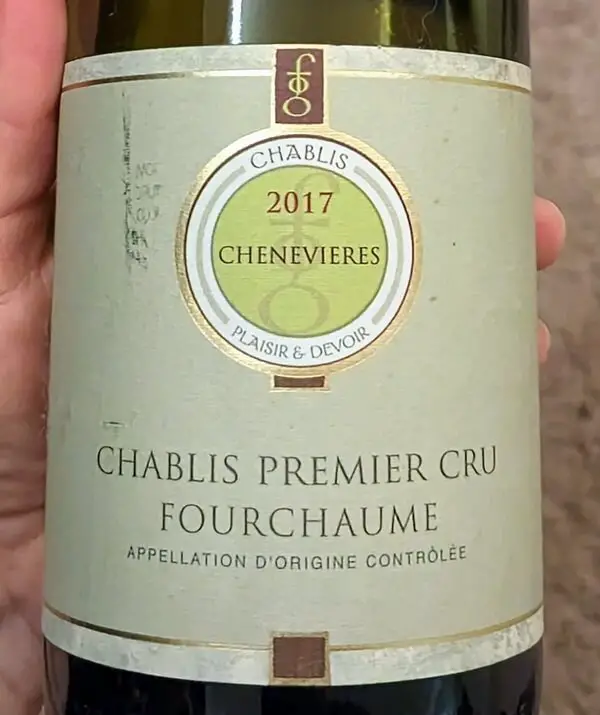
This is a French wine classification system indicating the wine’s geographic origin and production standards. The AOC regulates what grapes are grown in a region and how they’re grown (for example, it may or may not allow irrigation). It also regulates how the winemaking process happens.
Helpful Winebuying Tip: If you see AOC on a bottle of French wine, it’s a mark of quality.
3. Wine Label Term: Blend
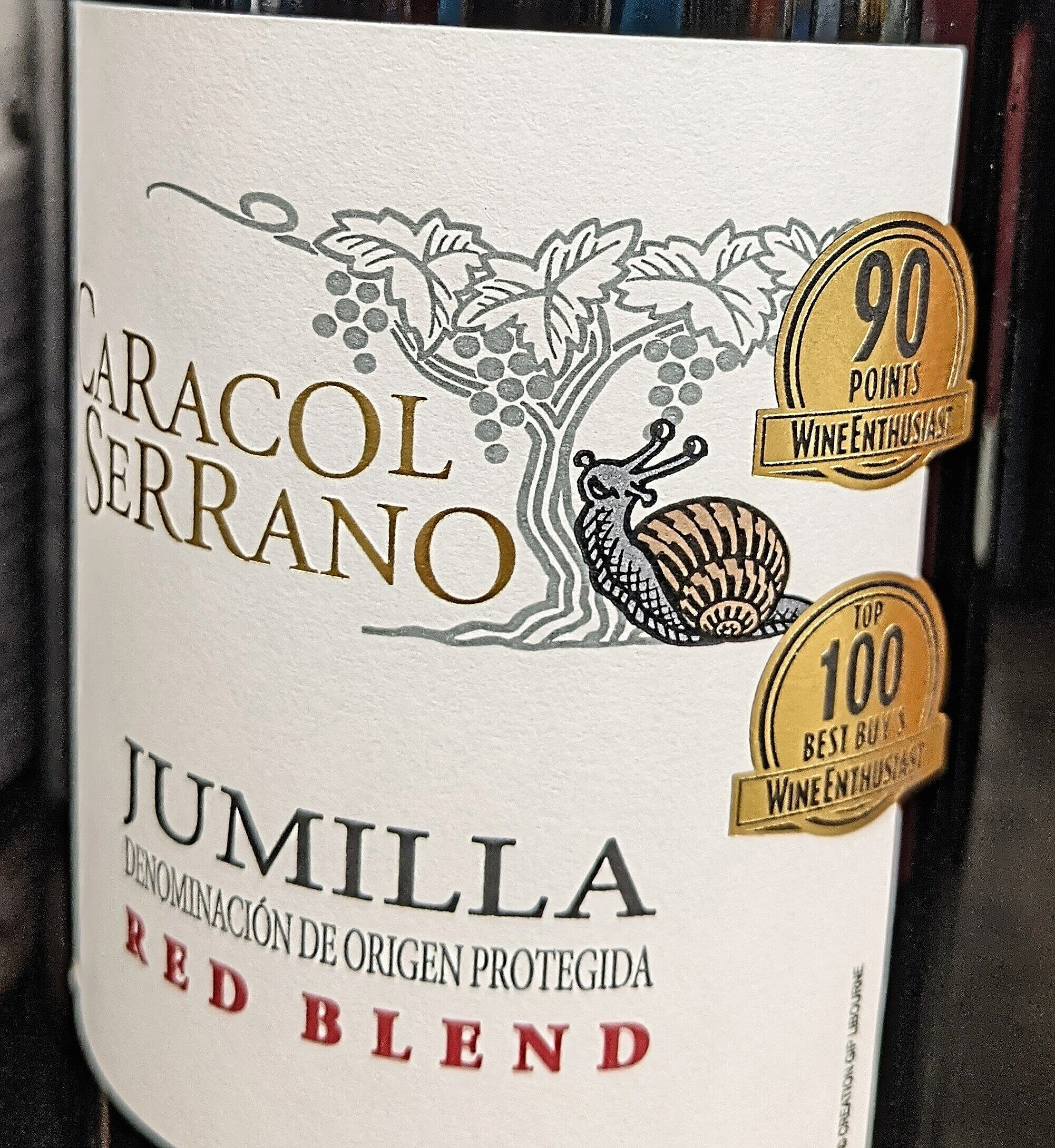
A term that lets you know that there are two or more different grape varieties or even grapes from different years in the wine. Sometimes producers put the exact percentages of the different grapes on the label, sometimes they don’t.
A blend has nothing to do with the wine’s quality.
Red Bordeaux wines are some of the most expensive wines in the world and they are always blends.
4. Wine Label Term: Body
Body describes the weight and texture of the wine in your mouth – how it physically feels. Wines fall on a continuum: light-bodied, medium-bodied, full-bodied. Examples:
- Light-bodied Wine: Moscato d’Asti
- Medium-bodied Wine: Pinot Gris
- Full-bodied Wine: Oaked Chardonnay
5. Bouquet
The bouquet describes how the wine smells. These are the aromas and fragrances that dance out of the glass. They can come from the grapes themselves or the winemaking process.
- Fruity, earthy, herbal, and floral aromas come from the grapes.
- Spice, butter, coffee, caramel, and toasty aromas come from the winemaking process.
6. DOC (Denominazione di Origine Controllata)

This is the Italian wine classification system indicating the wine’s geographic origin and production standards. You may also see DOCG, which is one level higher.
Helpful Tip: Here’s a full rundown of the Italian wine classification system and how to choose the best bottle of Italian wine: What’s Better? DOCG, DOC, IGT, and VdT Italian Wines
7. Estate Bottled
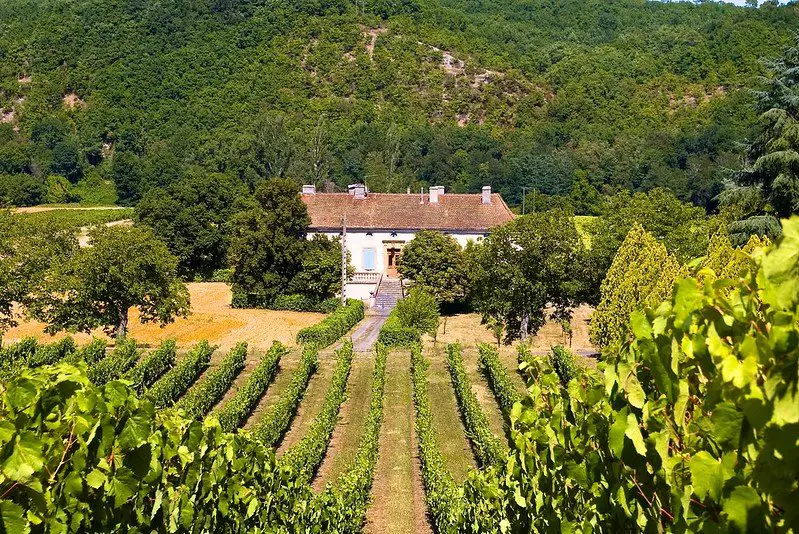
If you see the words “estate bottled” or even just “estate”, this wine label terminology means that the winery owns its vineyards and grew its own grapes.
This is actually not common in the US, where the business of growing grapes is often separated from the business of making wine.
Estate bottled wines can be an indication of higher quality because the winery has 100% control over the grape growing and winemaking process.
8. Old Vine
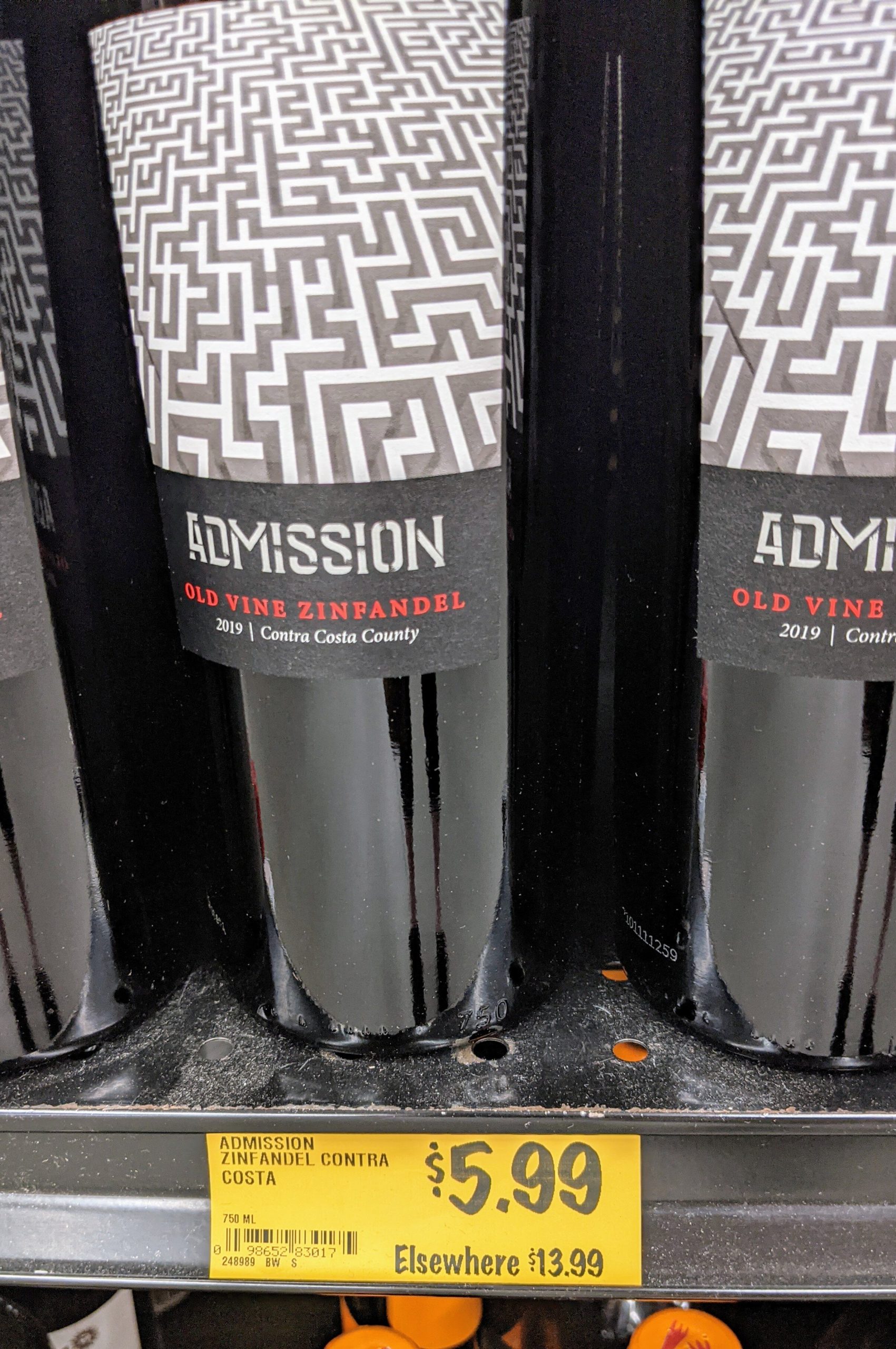
Old vine is a term used to indicate that the grapevines used to produce the wine are relatively old and have been producing grapes for many years.
Old vines don’t produce as much fruit as younger vines, but the fruit that they do grow has more concentration of flavor. Old vine wines can be intensely aromatic and powerful.
Helpful Wine Buying Tip: Old vines isn’t a regulated term, meaning anyone can put it on a wine bottle. Here’s a quick overview post of old vine wines and what they mean in the wine world.
9. Reserve
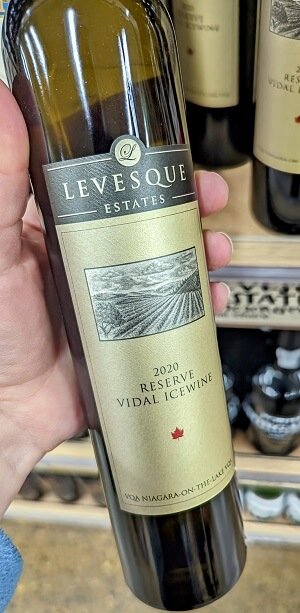
Reserve is a term used to identify a wine of higher quality. It can be made from better grapes, blended from select barrels, or crafted in a different style.
Helpful Winebuying Tip: Reserve isn’t a regulated term. Anyone can put the word “reserve” on a wine label. In some cases, it means that the wine has a higher alcohol level (the grapes were allowed to ripen longer). Some producers use “Reserve” to indicate a higher quality wine, others use it to trick you into thinking the wine’s higher quality so that you’ll pay more. It’s a business. What can I say?
10. Single Vineyard
Single vineyard wines mean that the grapes used to make the wine in the bottle you’re holding all came from the same vineyard.
If you see single vineyard on a wine bottle, it’s used to communicate quality.
It’s true that some well-known vineyards produce cult wines fetching hundreds, if not thousands, of dollars. But most wines benefit from blending grapes grown in different locations to bring them into balance.
11. Sulfites
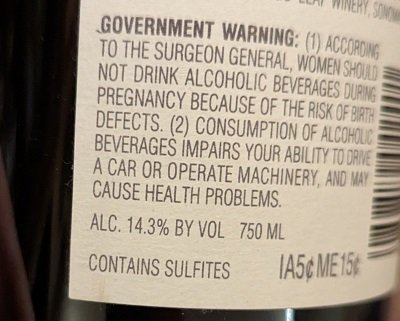
Sulfites are a preservative added to wines to prevent microbial spoilage and oxidation. It’s measured in ppm, or parts per million. Listing sulfites is another government mandated wine label requirement.
12. Tannins
Tannins are a structural component in wine that comes from seeds, stems, and skins. It imparts that drying sensation in your mouth when you sip a red wine.
Helpful Tip: Here’s a quick, 30-second tasting tip on how to taste wine tannins.
13. Terroir
Pronounce “tare-wahr”, this is a French word used to describe how the soil, climate, and geography influence a wine’s character.
14. Unoaked

Your wine didn’t spend any time in oak barrels. This style forefronts the pure fruit, floral, herbal, and mineral qualities of the wine.
Oak can give spice, vanilla, mocha, caramel, and toasty notes to your red or white wine. It also imparts texture and tannin.
Seeing the words “oaked” or “unoaked” can be helpful wine label information, especially if you prefer one style over the other.
15. Varietal
A varietal is the grape used to make your wine: Cabernet Sauvignon, Chardonnay, Pinot Noir, or Gamay.
16. Vintage
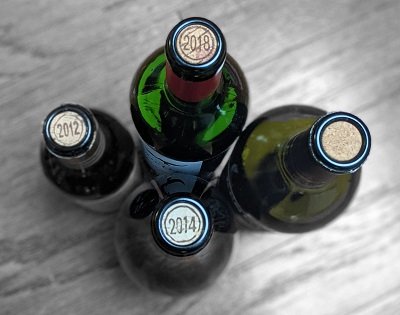
The year that the grapes were harvested is the wine’s vintage. This isn’t the year that the wine was released to market or bottled.
In the northern hemisphere, most wines are harvested in fall and released the following spring of the next year, for example: harvested in 2023 and bottled for sale in 2024. The vintage is 2023.
Helpful Tip: Here’s a nice post on what vintage actually means and how to use wine vintage charts.
Having a vintage date isn’t always listed on a wine label. If the wine used grapes from different years (in a blend, for example), you won’t see a vintage date.
Final Thoughts – Read those Wine Labels!
This quick wine label terminology guide should get you started browsing at your local bottle shop.
Be curious when reading labels.
Wineries spend significant time and money on package design to help you decrypt the wine inside. It’s in their best interest that you like what you buy. They want you to keep coming back for more!
Thirsty for More?
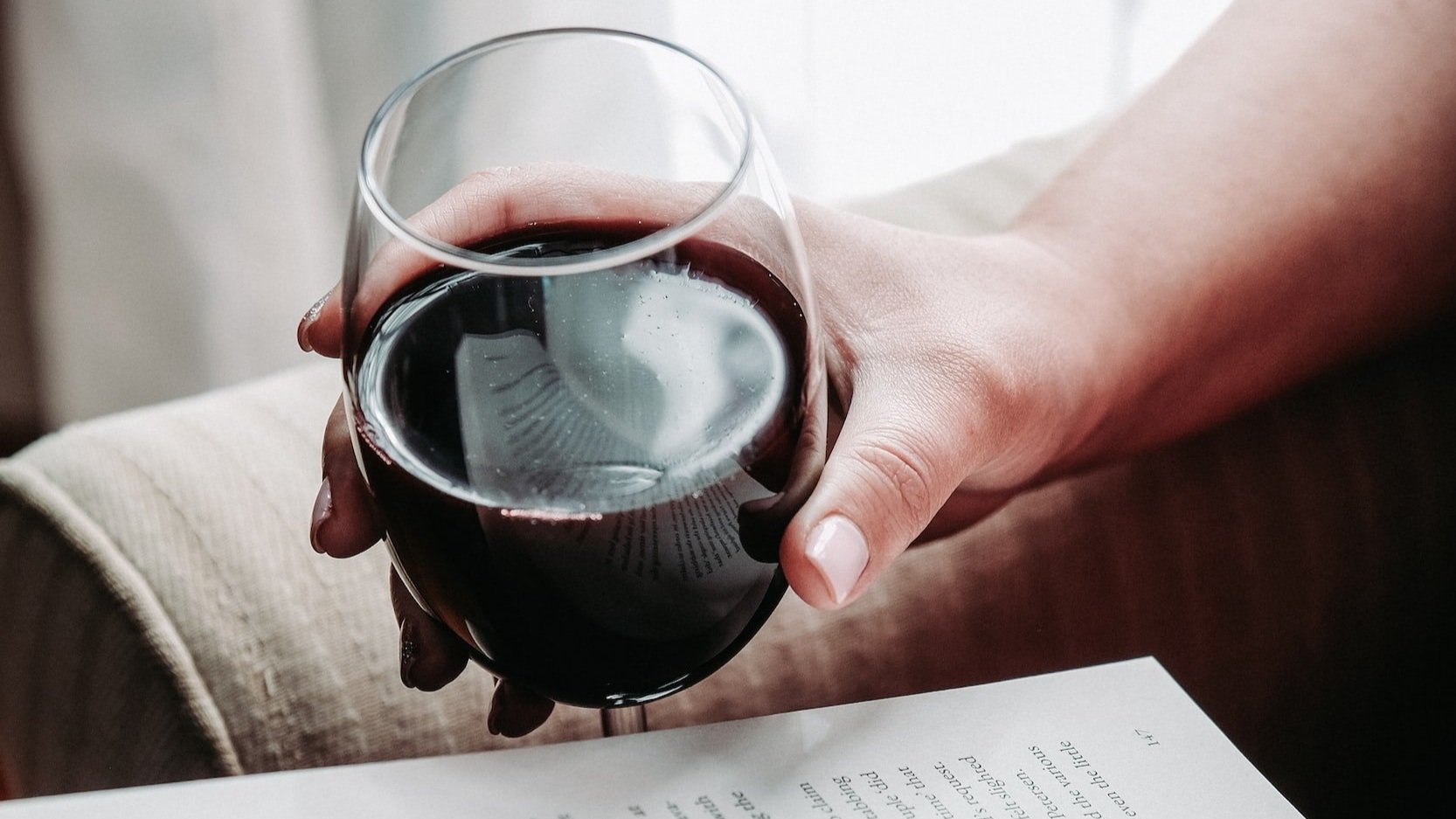
One of the best ways to learn about wine is through side-by-side comparisons, called wine flights. So, I wrote a post on wine flights, and what they are, and include 16 ideas for your next wine flight. Go check out wine flights here.
I’m a big believer in finding wine for every budget and every lifestyle. Wine infuses the dinner table with spirit. So, I put together this post on 15 easy ways to save money buying wine.
If you’re just getting started out with wine, I put together this helpful overview of food with wine pairing to get you started. Side note – I spend just as much time thinking about food with wine pairing as I do deciding what I’m going to eat every night. Utter hedonism. What can I say?
Check out light red wines that you should be drinking if you love Pinot Noir.
And here’s a helpful wine calculator that will tell you exactly how much wine you need for your next party.



